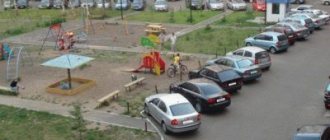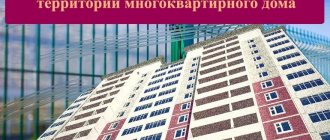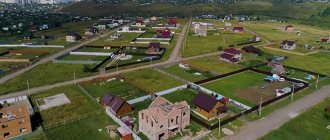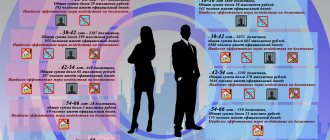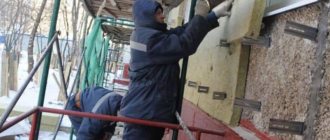The concept of local area
First of all, of course, it is necessary to understand what is included in the definition of “domestic area”. To do this, it is necessary to refer to such legal acts as the Housing Code of the Russian Federation and the Decree of the Government of the Russian Federation of August 13, 2006. No. 491 “On approval of the rules for the maintenance of common property in an apartment building and the rules for changing the amount of payment for the maintenance and repair of residential premises in the case of the provision of services and performance of work on the management, maintenance and repair of common property in an apartment building of inadequate quality and (or) intermittently, exceeding the established duration.”
In accordance with these legislative acts, the adjacent territory is considered to be a land plot on which an apartment building is located, and the boundaries of which are determined on the basis of state cadastral registration data, with elements of landscaping and landscaping, as well as other objects intended for the maintenance, operation and improvement of an apartment building , including transformer substations, heating points intended to serve one apartment building, collective parking lots, garages, children's and sports grounds located within the boundaries of the land plot on which the apartment building is located. According to the law, the maintenance of the local area is entrusted to the residents of the house - depending on the total area of the apartment belonging to a particular resident, his share in the common ownership of the property of the house is calculated - the larger the apartment, the greater the burden of expenses must be borne by the person for the maintenance of the common property of the house, including including the surrounding area.
Territory demarcation
Despite the fact that each apartment building has a specific territory, it is not always clearly marked out and formalized. According to the law, registration of the local area is carried out in 3 ways - one applies to new houses, the other two - to secondary housing (if the territory is marked in the cadastre and if the registration of the site has not yet been carried out).
To clearly identify the area around the house, it is necessary to carry out land surveying. The need for it usually appears in cases where the management company or residents begin to think about the rational use of the site. All objects around the house (gazebos, benches, platforms, etc.) are initially intended for use only by apartment owners. However, in reality this is often not the case. Despite the contribution of funds for maintenance and improvement by very specific residents, these benefits are available to everyone without any restrictions.
To avoid such situations, the management company, at the initiative of the owners, begins to allocate this territory. This procedure is carried out by specialized organizations working with the cadastre. They are involved if there is an appropriate decision made at a general house meeting. Trained specialists begin surveying the property. Avoidable mistakes are often made during meetings.
Please note that land surveying for existing houses in big cities is rarely required. For example, in Moscow, with its high cost of land, every square meter of urban territory is distributed and has its own owner. Most often, this procedure is requested when documents are lost. In other situations, information about the size of the local area can be clarified in Rosreestr.
Land surveying specialists are involved in cases where there is no information about the land owned by the house. The engineer measures the territory adjacent to the apartment building and hands over a disk indicating its boundaries. This media, along with a package of documentation, is sent to Rosreestr or MFC for registration of a cadastral plan.
In order for the responsible authority to prepare such a plan, it must be provided with:
- statement;
- minutes of the general meeting;
- disk from a cadastral engineer.
The period for preparing a cadastral plan is limited to thirty days. As soon as this document is in hand, you can use the territory indicated in it.
Management organizations should remember that it is impossible to abandon the territory after land surveying. Sometimes this turns out to be an unpleasant surprise. For example, a cadastral engineer may classify a part of an abandoned vacant lot as a house, which no one has paid attention to for many years. After land surveying, the site will have an owner, and local authorities will have the right to require him to maintain the land in accordance with the requirements for improvement.
This is interesting: Sample objection to the approval of the boundaries of a land plot
Based on the results of land surveying, the management organization, by decision of the owners, can:
- mark the boundaries of the adjacent territory of an apartment building with a fence; according to the laws and regulations in force in 2021, its height should be no more than 20 cm;
- place a barrier at the entrance in agreement with the traffic police, fire departments and other authorities;
- start creating recreational facilities, sports grounds and other infrastructure elements;
- erect the necessary outbuildings;
- transfer part of the territory to tenants;
- arrange a parking lot for the owners' cars, pave it and mark it;
- plant flowers or other plants.
In some cases, apartment owners may refuse the adjacent territory. This is usually due to reluctance to pay for its maintenance. If residents refuse to own and dispose of the land around the house, then a perimeter is maintained behind the building, spaced 5 meters from its walls. This is a regulatory requirement laid down in legislation. The rest of the land goes to the city, which can dispose of it at its own discretion. For example, authorities can transfer land to tenants who will build shops or arrange paid parking lots.
Maintenance of the local area
To understand which territory will be considered adjacent to each house, it is necessary that the corresponding land plot be formalized accordingly. The procedure for registering the adjacent territory must be handled by local authorities (local administration), however, this procedure must be initiated by the residents of the house themselves - either an authorized representative of the HOA or another person authorized by the general meeting of the house must submit a corresponding application to the local administration.
Based on the submitted application, the authorities must take the necessary measures to form a land plot and register it with the cadastral register. Based on clause 7 of Art. 36 of the Land Code of the Russian Federation, paragraph 4 of Art. 43 of the Town Planning Code of the Russian Federation, the boundaries and dimensions of a land plot within the boundaries of built-up areas are established taking into account the actual land use, red lines, adjacent land plots (if any), the natural boundaries of the land plot and town planning standards and rules in force during the development of these territories. Transfer of a land plot into common shared ownership to residents of an apartment building is free of charge. The adjacent territory belonging to an apartment building must be described in detail in the technical passport of the house.
I would like to note the following legislative nuance. The adjacent territory belongs to the right of common shared ownership to the owners of premises in an apartment building. What is included in the concept of local area has already been indicated above. However, often, houses are located relatively close to roads, sidewalks, courtyards and intra-block driveways in such a way (in particular, so close) that all these roads, driveways and sidewalks seem to automatically fall into the category of “domestic area”.
Although from a legal point of view this is incorrect - this territory is a common area, and it cannot be in the common shared ownership of the residents of the house, like a local area. However, due to the proximity of these objects to residential apartment buildings, the maintenance (in particular, cleaning) of sidewalks, roads, and driveways is automatically assigned to the residents of the buildings, as if it were their local area. In this regard, it is very important to know which specific territory is assigned to each individual house as a local area, in order, if necessary, to defend your rights to improve it.
Activities to improve the local area
As mentioned above, in the local area there may be all kinds of buildings and structures necessary for the use of the house by residents. Most often, such buildings and structures include utility areas for drying clothes, cleaning clothes, carpets and household items; recreation areas for adults; children's playgrounds and sports grounds with landscaping and the necessary equipment of small architectural forms for summer and winter recreation of children. Thus, measures for the improvement and maintenance of the local area include not only work on sanitary cleaning of the land plot, which is considered a local area, but also other work on the maintenance and repair of objects located in this territory.
It should be noted that the adjacent territory of houses with a HOA management form can be used by the HOA at its discretion - this is the right of the HOA, which can be exercised by it or not, at its discretion. For example, the HOA has the right to build playgrounds on it, plant flower beds, fence it, improve it in other ways, etc. But even if the HOA does not carry out such events on its local territory, it is still obliged to keep its territory clean and okay.
Cleaning of the local area is carried out either by the management company or, under an agreement with the residents of the house, by the relevant organization. Residents of the house have the right to determine the frequency and scope of services provided by these organizations for the maintenance and improvement of the local area, as well as check the quality of such work.
Improvement
The following areas are required to be improved:
- Clear passage for firefighters or ambulances.
- Parking for cars.
- Benches for rest, gazebos, covered pavilions.
- Fenced area for children's games.
- Flower beds, alpine slides, and other types of decorative green spaces.
- Fenced area for waste storage.
- Lawn for walking dogs.
Additionally, the territory can be equipped with:
- Parking for bicycles and strollers.
- Outdoor clothes dryers.
- Playground for sports games (basketball, baseball, football).
- Area for playing dominoes and chess.
- Dovecote, or place for feeding birds.
- Street training complexes.
This is interesting: Decoding the symbols on the BTI land plot plan
If the plot of land is sufficient in area, then additional facilities can be arranged in the landscaping of the local area.
It is allowed to make hedges, but only of the following type:
Name of fence Description Temporary Installed for the period of repair, construction, and other work (for example, when throwing snow from roofs or knocking down icicles). Must be equipped with red, red and white signal flags. Specialized The following are blocked: - temporary storage area for solid waste (solid waste); - playgrounds; — sports grounds; - drying clothes; — area for washing and beating carpets; — lawn for walking dogs, other. Living, plant Hedges made of ennobled bushes. They cannot be higher than 0.5 m. Decorative Purpose – decoration. Material: - wood; - plastic; - metal (forged construction of fence sections is often used). These are mostly low buildings, no higher than 0.5 m. The emphasis is also on the fortress. Barrier A delimiter that does not allow cars to pass through. It can be ground-based, or it can be above-ground, mobile.
List of works for the maintenance and improvement of the local area
The list of works on the maintenance and improvement of the local area includes work on:
- cleaning of common areas, including disinfection of premises;
- cleaning underground parking lots;
- equipping utility sites for installing waste containers (collectors), bins for food waste;
- removal of garbage, snow, drainage of melt and rainwater, ensuring conditions for the safe movement of pedestrians and vehicles in winter, removing snow from roofs and removing icicles;
- arrangement and mowing of lawns, care of green spaces, raking leaves, cleaning up mown grass;
- planting flowers and caring for them in the summer;
- repair and production of improvement objects: production of children's slides and sandboxes, installation and repair of summer playgrounds, cleaning and painting of facade cladding, gates, grilles, benches;
- directly cleaning up garbage (daily or other frequency, by agreement) from the local area. And in the winter season, additionally clearing snow and sprinkling sand at entrance entrances and pedestrian paths.
This is a basic list of works for landscaping and maintaining the local area, but it is not exhaustive. Also, you should know that local authorities have the right to apply administrative measures (based on local regulations) to violators of the rules for maintaining the local area.
I would like to note that, despite the fact that the local area is the common shared property of an apartment building, in many cities and other localities local administrations carry out actions aimed at helping residents of houses in improving this area. Thus, in particular, various kinds of targeted programs are carried out at the expense of local budgets, according to which, at the appropriate requests of residents, playgrounds, flower and tree seedlings, or funds for repairs and improvement of the local area can be allocated in kind.
